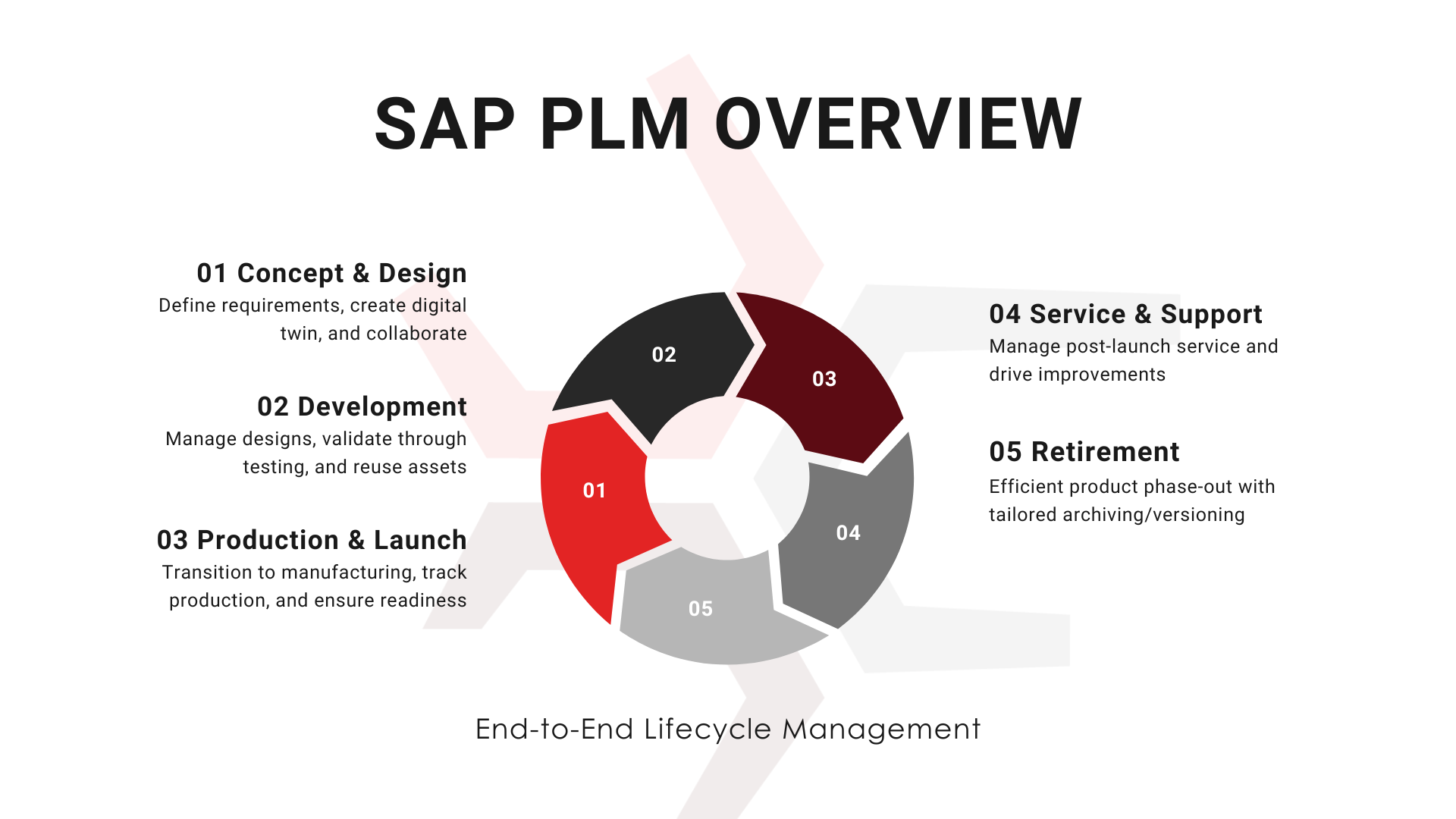What project management and reporting capabilities does SAP PLM provide?
SAP Product Lifecycle Management (PLM) offers a comprehensive suite of project management and reporting tools that span the entire product lifecycle, from initial concept to product retirement. These capabilities are designed to streamline processes, improve collaboration, and provide real-time insights that drive informed decision-making. Here’s a breakdown of how SAP PLM supports each phase of the product lifecycle:

SAP PLM’s robust project management and reporting capabilities are integral to managing every stage of the product lifecycle. From concept to retirement, the platform ensures that teams are aligned, processes are streamlined, and decisions are data-driven. By leveraging SAP PLM, organizations can enhance their product development processes, reduce time-to-market, and maintain high levels of quality and customer satisfaction throughout the lifecycle of their products.